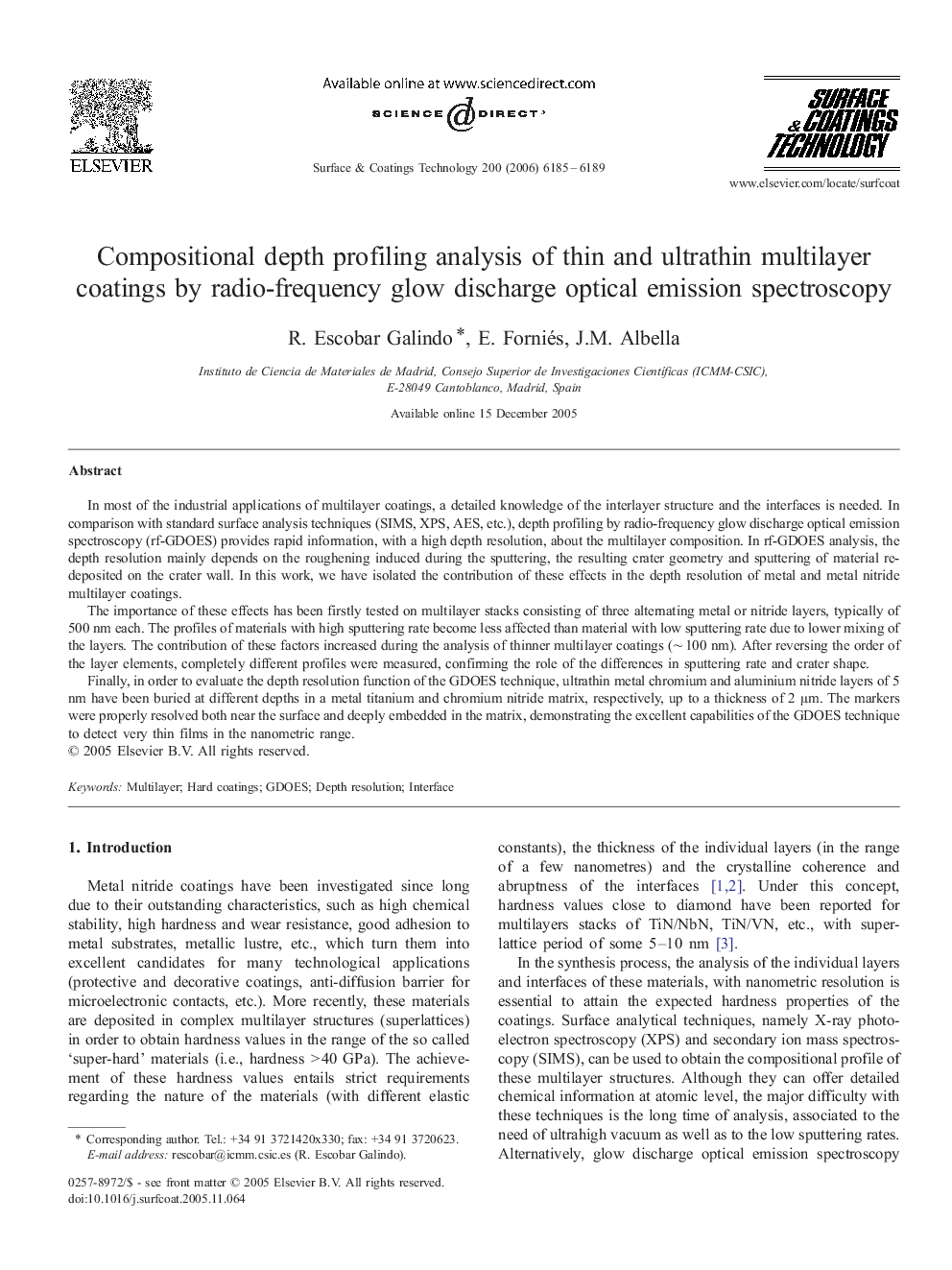| کد مقاله | کد نشریه | سال انتشار | مقاله انگلیسی | نسخه تمام متن |
|---|---|---|---|---|
| 1661887 | 1517703 | 2006 | 5 صفحه PDF | دانلود رایگان |

In most of the industrial applications of multilayer coatings, a detailed knowledge of the interlayer structure and the interfaces is needed. In comparison with standard surface analysis techniques (SIMS, XPS, AES, etc.), depth profiling by radio-frequency glow discharge optical emission spectroscopy (rf-GDOES) provides rapid information, with a high depth resolution, about the multilayer composition. In rf-GDOES analysis, the depth resolution mainly depends on the roughening induced during the sputtering, the resulting crater geometry and sputtering of material re-deposited on the crater wall. In this work, we have isolated the contribution of these effects in the depth resolution of metal and metal nitride multilayer coatings.The importance of these effects has been firstly tested on multilayer stacks consisting of three alternating metal or nitride layers, typically of 500 nm each. The profiles of materials with high sputtering rate become less affected than material with low sputtering rate due to lower mixing of the layers. The contribution of these factors increased during the analysis of thinner multilayer coatings (∼ 100 nm). After reversing the order of the layer elements, completely different profiles were measured, confirming the role of the differences in sputtering rate and crater shape.Finally, in order to evaluate the depth resolution function of the GDOES technique, ultrathin metal chromium and aluminium nitride layers of 5 nm have been buried at different depths in a metal titanium and chromium nitride matrix, respectively, up to a thickness of 2 μm. The markers were properly resolved both near the surface and deeply embedded in the matrix, demonstrating the excellent capabilities of the GDOES technique to detect very thin films in the nanometric range.
Journal: Surface and Coatings Technology - Volume 200, Issues 22–23, 20 June 2006, Pages 6185–6189